This is an illustrated copy of the talk I gave at the Lift11 conference in Marseille, France in July 2011. I was in a session titled "Slow," and the later sections of the talk explain how the prototypes shown in the Lift exhibition could be seen as examples of slow or contemplative technologies.
Until The Distraction Addiction is published (in August 2013), this is probably the best (and certainly the best-illustrated) overview of the project.
If you don't want to sit through the talk, you can read the transcript after the jump.
Introduction
In the spirit of earlier talks that started with an activity, I want everyone to open up your laptop, iPad, or smartphone, and check your email. While you're doing that, take notice of something: Are you holding your breath? You probably are. Almost everybody holds their breath when they check mail, and almost nobody realizes it.
It's a small thing, but every time you do it (and think about how often your check your mail) CO2 builds up in your bloodstream, your body interprets that as a warning, and your anxiety level goes up a little. Your fight or flight reflex switches on.

via flickr
An ancient, subconscious physical system accidentally triggered by a modern technology illustrates how complicated– and problematic– our relationships with information devices have become. Most problematic is that we live in an age of information that often feels like an age of distraction. Technologies that were supposed to help us think better, work more efficiently, and connect more meaningfully with others now interrupt us, divide our attention, and stretch us thin.
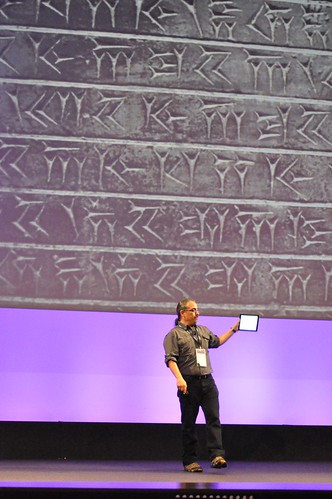
via flickr
This often feels like an inevitable state of affairs. And indeed, plenty of people will tell you that it is. Historians of media argue that every new information technology since the invention of writing has been followed by dramatic, sometimes disorienting, shifts in learning and cognition– and we just happen to be living through the latest.
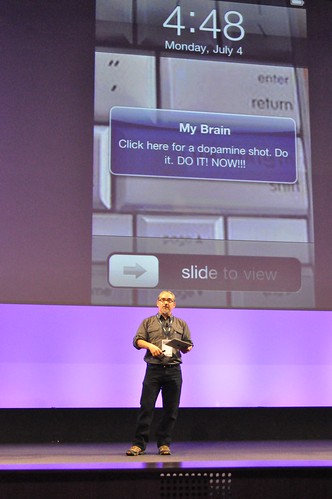
via flickr
More recently, neuroscientific explanations for our addiction to technology have become popular. We learn to crave the dopamine shots that come when a new text message arrives on our smartphone.

via flickr
I argue that this condition of perpetual distraction is not inevitable. Technologies often seem to be rational, efficient products of impersonal historical processes. They do a great job of hiding space for contingency, choice, and human agency, but they can never destroy it entirely.
I want to bring that space back to the surface of our relationship with information technologies.
I want you to see that by thinking about your mind and how it interacts with your devices and the Web;…
by understanding how information technologies change the way we think about ourselves;…
and by applying some very old ideas to this problem…
you can retake control of your digital world, and expand your attention, your ability to focus, and your creativity.
Four Big Ideas
I call this approach contemplative computing. That sounds like a contradiction or oxymoron, and in today's world it is; but it doesn't have to be. Contemplative computing differs from things like "cloud computing" or "ubiquitous computing," that describe technical constellations or capabilities. Those are things you can buy. Contemplative computing, in contrast, is something you do.
I'll highlight four big ideas that help you do it.
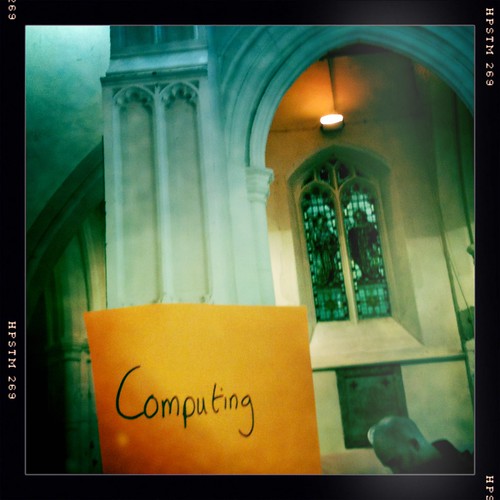
via flickr
Extended Selves and Contemplative Practices
The first big idea is that our relationships with information technologies are incredibly deep, and express fundamental human capacities.

via flickr
Andy Clark, a philosopher and cognitive scientist at Edinburgh University argues we're "natural born cyborgs," forever seeking to extend our minds through technology. This is so, continues Clark, because the "mind" is not confined to the brain, or even to the body.

via flickr
It's more useful to think of ourselves as having "extended minds" made up of a network of brain, senses, body, and objects, a network around which different cognitive functions can migrate, be shared, or be outsourced. (Quick example: if you're like me, you haven't memorized a phone number since you got a smart phone.)
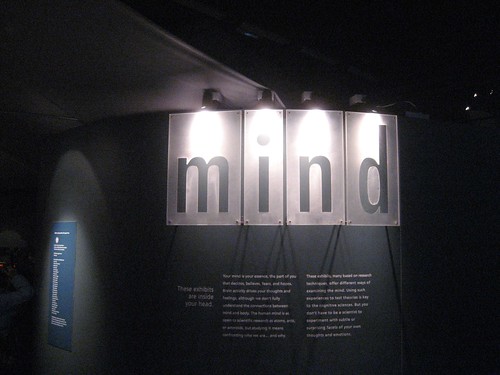
via flickr
The extended mind model is valuable because it helps us see what's at stake when our relationships with technologies go bad. Today's information technologies, I contend, cause us pain not because they're supplanting our normal cognitive abilities. These have always been flexible, and it's not obvious that offloading your memory for things like phone numbers and email addresses is necessarily bad.
The problem is that today's information technologies are often poorly-designed and thoughtlessly used: they're like unreliable prosthetics that we have to depend on, but can't quite control or trust. (This also highlights the limitation of things like the Digital Sabbath movement, which encourages unplugging from the Internet on a regular basis. This can be a good thing, but it's a break from the problem, not a permanent solution.)

via flickr
We need those breaks because our high-tech world, in which contemplative spaces are melting as quickly as tropical forests, where work and life are becoming more frantic, and where technologies grow more demanding and irresistible, present unique challenges.
But here's our second big idea. Humans have always had to deal with distraction and lack of focus– and for thousands of years, we have been cultivating techniques that effectively address them.

via flickr
Buddhism, Zen, and many other contemplative practices have all evolved to tame what Indian teachers called "the monkey mind"– the distractible, chattering, undisciplined mind that can't focus, can't sit still, and can't achieve anything. (Sound familiar?)
Contemplative practices seem to have emerged about three millennia ago, in different parts of the world, as urbanization and the pace of civilized life quickened. In the last three decades, neuroscientists, psychologists and therapists have all observed that contemplative practices can help restore cognitive abilities—memory, attention, focus—lost to physical injury, post-traumatic stress, or chronic illness.
This suggests that contemplative practices don't just offer a way to settle the monkey mind. They can help us regain control of the extended mind as well.

via flickr
Redesigning Tools and Selves
This brings us to our third idea: that in order to change your extended mind, you must first understand how the digital world tries to change you. You have to look closely at how you interact with information technologies, and how you think about those interactions.
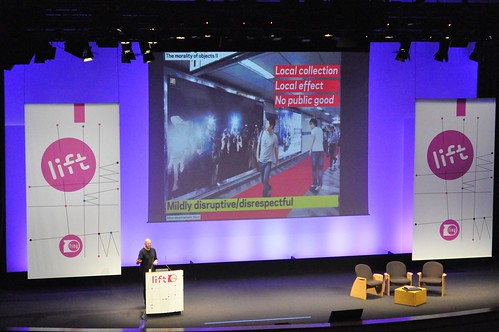
via flickr
Yesterday, Adam Greenfield talked about how technology can encode or erode human values. His examples showed how technologies in the public sphere– like the advertisement shown in the picture above– reflect assumptions about what users want, what technology can and should be able to do with and to people, and what companies can do to shape public space.

via flickr
Since the Victorian era, interactions with information and communications technologies– with the outer reaches of our extended minds– have influenced our mental models about technology, work, and ourselves. These models often carry unexamined, and damaging, assumptions.

via flickr
To take but one example, we normally equate intelligence with speed: in English, we say that someone is "a quick study" or a "fast learner." By this standard, computers are getting faster, cheaper, and more powerful, while we're stuck with the same brains as our ax-wielding, cave-dwelling ancestors.
But this comparison obscures the fact that even though we use similar terms for them, computer and human intelligence are actually very different things.

via flickr
We don't get smarter through physical changes to basic brain structure; from the Neolithic period on, cognitive archaeologists tell us, cultural evolution and increasing intelligence have been driven by increasingly complicated interactions with material environments.
Our experiences with computers have recalibrated our ideas about human work and intelligence, and led us to value such computer-like qualities as efficiency, speed and productivity over human qualities of creativity, deliberation and thoroughness.
But knowing about such effects can let us resist them.
The fourth big idea in contemplative computing is that you can redesign your extended mind. How do you go about doing this?

via flickr
One thing to do is to self-experiment. Self-experimentation is just what it sounds like: the systematic observation of your own physical or psychological reactions to specific interventions. Self-experimentation bears a family resemblance to the do-it-yourself [DIY] movement that Jonathan Kuniholm spoke about yesterday.
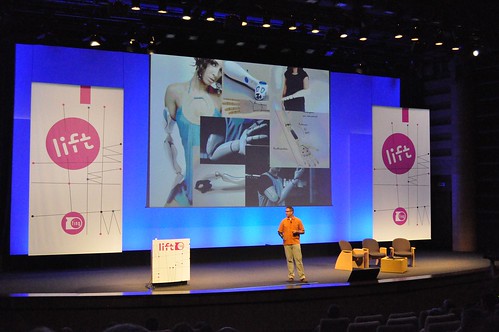
via flickr
Meditation is an especially powerful kind of self-experimentation (one biographer of the Buddha wrote that he treated himself as a laboratory where he conducted experiments on the mind), but you can also self-experiment with different ways of using information technologies and workflows.
This kind of self-experimentation generates long-term data series that are unique, and cannot be gathered by traditional user studies or focus groups. Self-experimentation is also a reminder that only you have the knowledge and ability to redesign your extended mind.
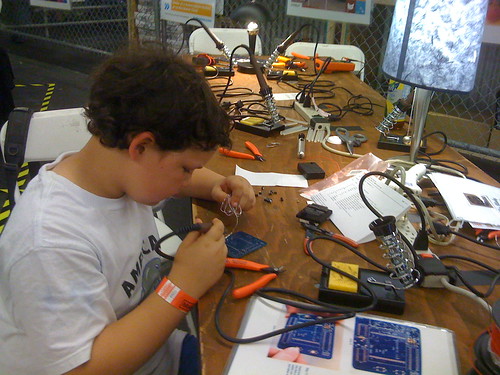
via flickr
Likewise, it's good to tinker with devices and practices, to see how they can be improved to work better with you. Tinkering is a pragmatic, improvisational approach to technologies that emphasizes flexibility, rapid learning, and practicality.
It's not about just memorizing the manual; it's about getting under the hood and creating your own knowledge about a technology. This gives tinkering a playful, engaging aspect that some describe, in a nice coincidence, as "Zen-like."
Self-experimentation and tinkering are complimentary strategies for redesigning your extended mind. Self-experimentation starts with you– with the center of your extended mind– and works outward; tinkering starts with technology– with the edges of your extended mind– and works back.

via flickr
Over time, you'll learn to notice details of technology use that you hadn't before (like holding your breath when you check your email); understand where they come from; and experiment with solutions that work for you.
You'll get better at figuring out how to adapt new devices to suit your life– not by following abstract ideas about productivity or efficiency, but by shaping devices to fit you.
Distractions actually become less appealing, as the inherent pleasure of attention– of being able to focus your mind where you want– replaces it.
And in the course of becoming more contemplative about technology, you become more contemplative while using technology.
Contemplative Computing and Slowness
Developing a contemplative approach to computing is not easy or fast: it requires unlearning old habits and ways of thinking, as well as learning new ones. In other words, it's slow. But as the Lift Experience shows us, contemplation and slowness, and technology, are not necessarily incompatible.
We normally associate "slow" with age or infirmity or even incompetence; speed is its moral opposite, a sign of high energy and performance. But while it might be bad in computers or organizations, in the human realm it's more often a sign of skill, mastery and experience.

via flickr
Consider video games. Beginning players tend to just mash buttons, try everything, and hope that something good happens. Experienced players, in contrast, move with economy and deliberation.
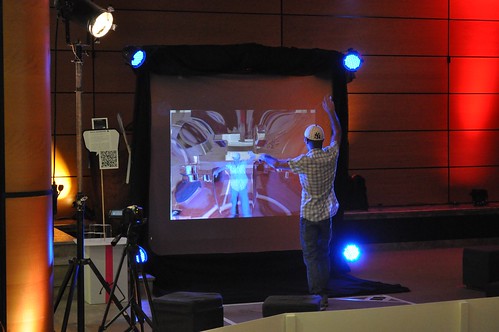
via flickr
This is how you play at the Digital Whiteboard: the most interesting things happen if you move slowly, not if you flail around. Indeed, there are few sports or games that reward speed for its own sake: speed is a (not-always reliable) means, not an end. And even in sports like downhill skiing, speed is a product of skill.
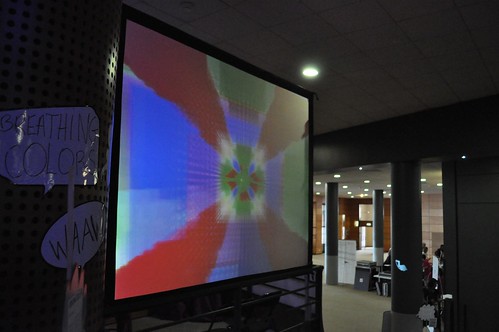
via flickr
Likewise, rapid breathing is an unconscious reflex: this helps explain why meditators can spend years working to slow their breathing, and why disciplined breathing is essential to contemplation. It's embodied contemplation.
A system like Breathing Colors can be helpful by providing feedback and rewarding slow, steady breathing in a way that is supportive but unobtrusive.
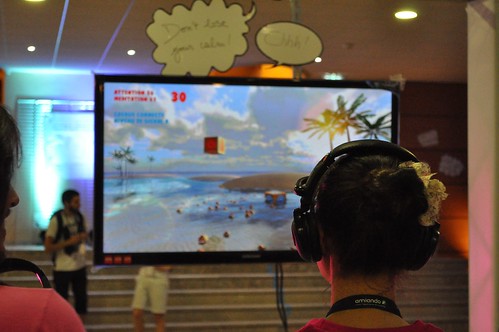
via flickr
And finally, the Cerebral Interfaces shows how an engaging system can explicitly reward calm, meditative states.
Conclusion
It's important to conduct these kinds of experiments, and to learn how to create extended minds that support contemplation, right now– because the problem of technology-accelerated perpetual distraction is only going to get worse.

via flickr
I don't think anybody here will have any trouble imagining a world in which every built object has a unique digital fingerprint, and anything of value can have its own Internet address. Add inexpensive flexible displays that make any room into Times Square on New Year's Eve. Just for fun, top it off with cheap cameras and sensors that make it trivially easy to document every second of our lives.
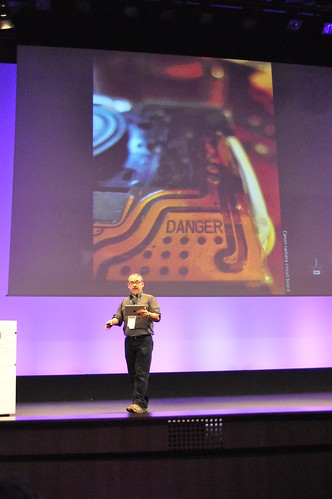
via flickr
Then mix in online games, nano-niche advertising, location-based services, surveillance analytics, real-time social media, software agents and telemarketers. Now imagine all of these competing to capture, commoditize, and resell our attention, immersing us in a bath of related content, friend requests, status updates, reviews, recommendations, ridiculously huge offers, daily deals, and instant alerts. Whether we want it or not.

via flickr
If we're not thoughtful– if we're not contemplative– this could be the world in a decade. But it doesn't have to be that way. Future technologies can be designed to cultivate attention, or to commoditize it; to preserve our powers of concentration, or to waste them.
It's said that in life, pain is inevitable but suffering is a choice. In other words, we cannot escape death and loss– they're a part of– life, but we can shape how they affect us. I would argue that our entanglement with information technologies is inevitable. But if we understand how our extended minds work, how our devices try to program us, and how contemplative practices can help us remake our extended minds, then distraction can be a choice.

via flickr
Thank you very much for your attention.
About the illustrations. All the photographs I use in this talk, and increasingly all the illustrations I use in ALL my talks, are pictures I've taken, and published on Flickr. (The obvious exception in this case are pictures of me speaking, which were taken by my friend Annie Gentes.) I also use a few in my business cards or on my blog. It's laziness passing itself off as a multimedia cross-platform branding strategy.
Also, the pictures go on Flickr because I use it as an easily-accessible photo archive on the road. When it's 1 a.m. and I'm rewriting the conclusion of my talk– and it's ALWAYS the case that at 1 a.m. the night before a talk, I'm up rewriting the conclusion– I love being able to download new illustrations to go with the new text.